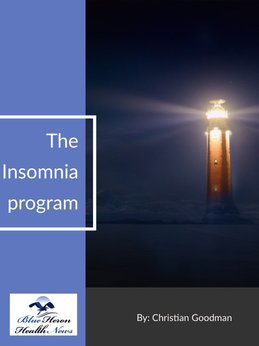
The Insomnia Program™ By Christian Goodman This program has been created by Christian Goodman, a natural health expert and sufferer of insomnia. He has used an audio program to let your fall sleep with the help of a bit of a hypnotic effect on your body.
How accurate are sleep diaries in diagnosing insomnia?
Sleep diaries are a commonly used tool in the assessment of insomnia and other sleep disorders. They provide valuable information about an individual’s sleep patterns, routines, and perceived quality of sleep over time. However, while sleep diaries can be a helpful diagnostic aid, they have both strengths and limitations in accurately diagnosing insomnia. Here’s a breakdown of their accuracy:
Strengths of Sleep Diaries in Diagnosing Insomnia:
- Subjective Data Collection:
- Sleep diaries capture the individual’s perspective on their sleep habits, which is essential for diagnosing insomnia, a condition characterized by perceived difficulty in falling asleep, staying asleep, or waking up too early.
- Diaries typically ask patients to record bedtime, wake-up time, time spent awake during the night, and time of morning awakening, as well as quality of sleep and factors that might affect sleep (e.g., caffeine or alcohol intake, exercise, stress). This subjective data can be very informative.
- Tracking Sleep Patterns Over Time:
- Sleep diaries are typically kept for 1–2 weeks, allowing for an ongoing record of sleep patterns that can help identify chronic issues. Since insomnia is a long-term condition, this sustained data collection allows healthcare providers to assess whether the issue is persistent and not just an isolated event.
- Identification of Behavioral Factors:
- The diary helps identify patterns of poor sleep hygiene or behaviors that might contribute to insomnia, such as irregular sleep schedules, excessive screen time before bed, or late-night caffeine consumption. These insights are crucial for developing an effective treatment plan.
- Non-Invasive and Cost-Effective:
- Sleep diaries are easy to implement and do not require specialized equipment or procedures. They are inexpensive and can be used as part of an initial screening process before deciding if further diagnostic testing (e.g., polysomnography or actigraphy) is needed.
- Complementary to Other Diagnostic Tools:
- Sleep diaries can complement other diagnostic tools, such as questionnaires (e.g., Insomnia Severity Index) and clinical interviews, helping clinicians understand the context of sleep problems in the patient’s daily life.
Limitations of Sleep Diaries in Diagnosing Insomnia:
- Subjectivity and Recall Bias:
- Sleep diaries rely heavily on self-reporting, which introduces the possibility of recall bias. Individuals may inaccurately remember the time they fell asleep, the quality of their sleep, or the number of awakenings during the night. People with insomnia, in particular, may have a distorted perception of their sleep, leading to overreporting or underreporting sleep disturbances.
- Motivation and Consistency: The accuracy of a sleep diary depends on the individual’s commitment to consistently recording their sleep data. A person might forget to fill out the diary, leading to incomplete or inaccurate data.
- Overestimation of Sleep Problems:
- Some individuals with insomnia may overestimate the severity of their sleep problems. For example, a person might feel like they are awake for long periods during the night, but objective measures (e.g., actigraphy or polysomnography) might show that their actual sleep time is less disturbed than they perceive.
- Conversely, people may underestimate the impact of mild sleep disturbances, especially if they feel they are managing well despite some sleep difficulties.
- Lack of Objective Data:
- Sleep diaries provide subjective rather than objective data. Without tools that directly measure sleep parameters (e.g., actigraphy or polysomnography), sleep diaries cannot provide accurate information on actual sleep architecture, such as the proportion of time spent in deep sleep or light sleep, or the frequency of awakenings.
- Inconsistent Sleep Patterns: A person with insomnia may experience intermittent sleep disturbances, making it difficult to assess the problem accurately with a diary if the disturbances do not occur regularly. This could lead to a misdiagnosis or delay in identifying the full extent of the problem.
- Influence of External Factors:
- Some factors that influence sleep, such as environmental stressors, emotional distress, or medications, may not be consistently recorded or accurately reflected in a sleep diary, leading to a less comprehensive understanding of the patient’s sleep issues.
- Limited Diagnostic Capability:
- While sleep diaries can highlight symptoms of insomnia, they are not diagnostic on their own. Insomnia diagnosis typically requires a comprehensive evaluation, including ruling out other possible causes of sleep disturbances (e.g., sleep apnea, restless leg syndrome, depression, or anxiety). A sleep diary is a tool to aid in the diagnosis rather than a standalone diagnostic method.
Improving the Accuracy of Sleep Diaries:
- Guidance and Structure: Healthcare providers can improve the accuracy of sleep diaries by offering clear instructions on how to record sleep patterns and behaviors. For example, using a structured format or providing digital tools (apps) can help patients track their sleep more consistently.
- Use in Conjunction with Other Tools: Sleep diaries should be used in combination with other assessments, such as sleep questionnaires, medical history reviews, and objective sleep studies (e.g., actigraphy or polysomnography), to provide a fuller picture of the patient’s sleep health.
- Longer Monitoring Period: In some cases, it may be helpful to ask the patient to keep the sleep diary for longer than one or two weeks to gather a more accurate and comprehensive assessment of their sleep patterns.
Conclusion:
Sleep diaries are a useful tool in diagnosing insomnia because they provide insight into a person’s subjective experience of sleep disturbances, help identify patterns over time, and reveal possible contributing factors. However, they are not infallible, as they rely on self-reporting, which can introduce bias or inaccuracies. To enhance the accuracy of diagnosing insomnia, sleep diaries should be used in combination with objective measures, clinical interviews, and additional diagnostic tests.

The Insomnia Program™ By Christian Goodman This program has been created by Christian Goodman, a natural health expert and sufferer of insomnia. He has used an audio program to let your fall sleep with the help of a bit of a hypnotic effect on your body.